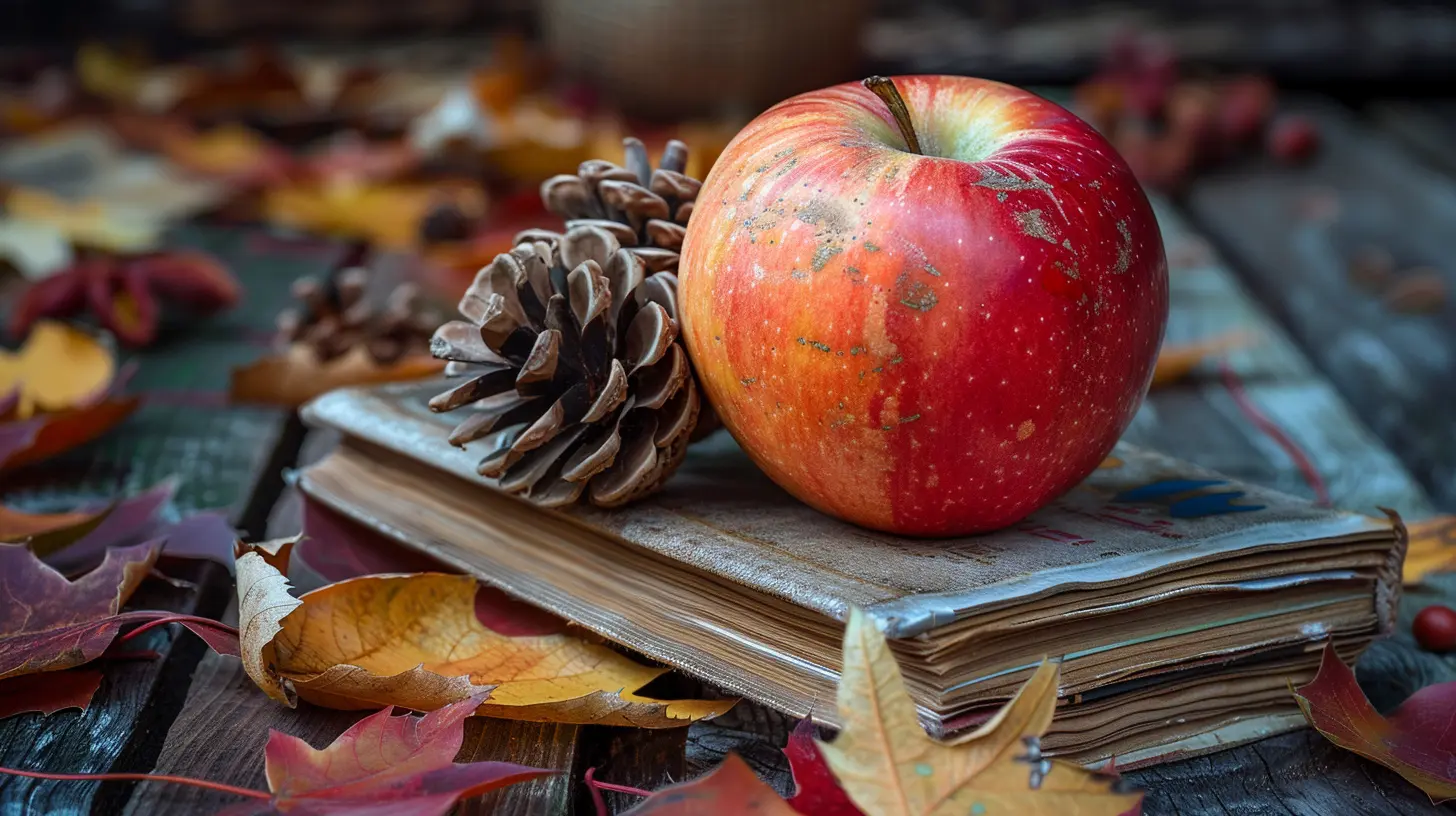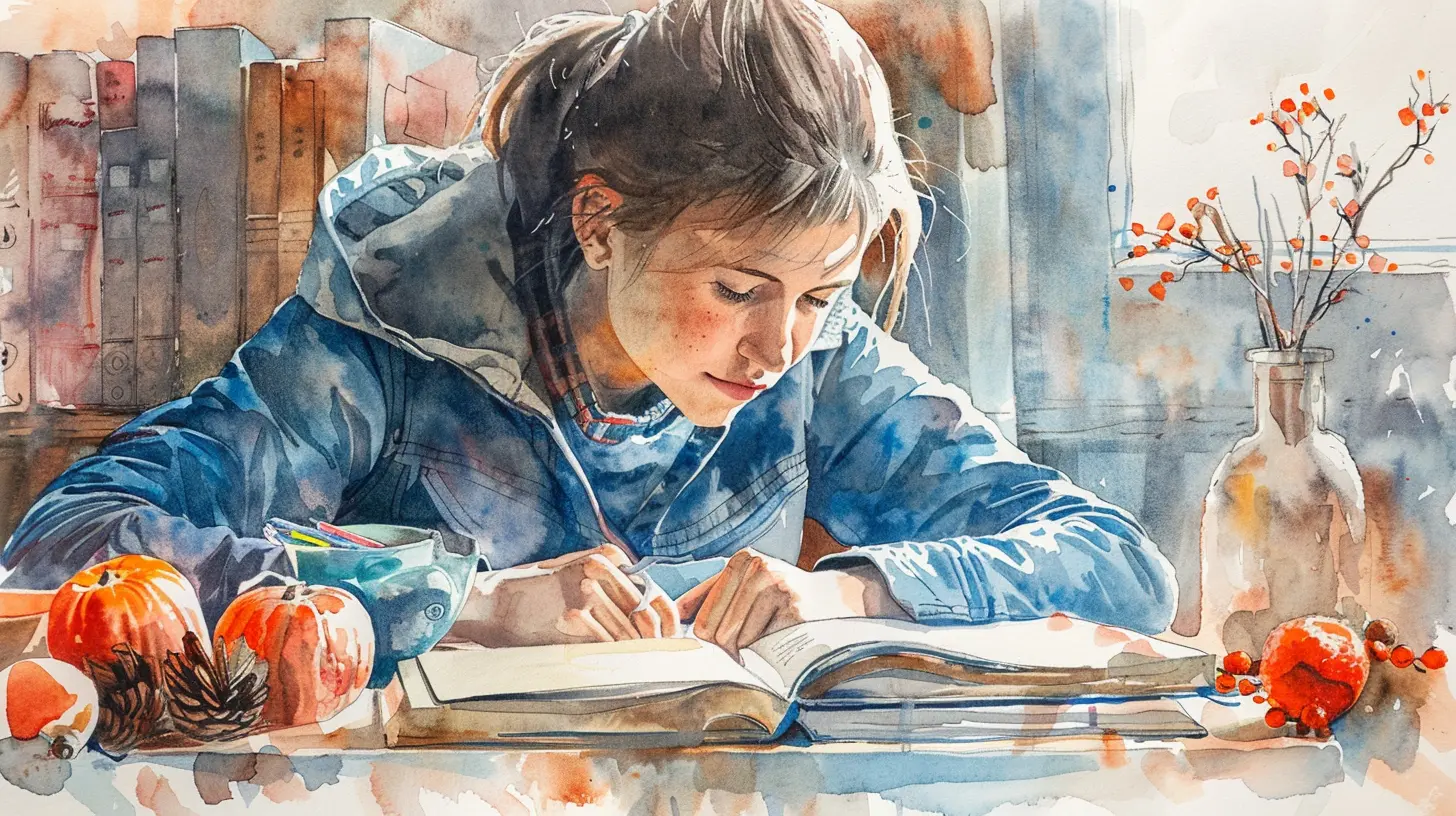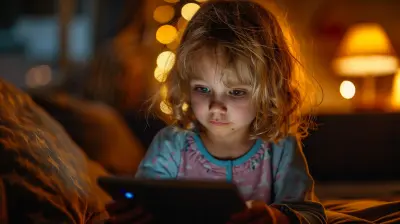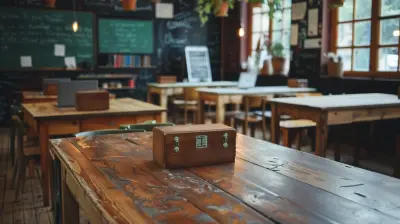Homeschooling Through the Holidays: Ideas for a Balanced Approach
19 August 2025
Ah, the holidays. That magical time of year when the world sparkles with lights, the kitchen smells like cinnamon and cloves, and your homeschool schedule—well—let’s just say it can go right out the window if you're not careful.
If you're a homeschooling parent, you probably know the dance between staying on track academically and still soaking up all the joy this season brings. Let's be real—it's not easy. Kids get excited, relatives may be visiting, and the very idea of cracking open a math book can feel like trying to open a stuck jar lid with greasy hands.
But here’s the good news: You don’t have to choose between disciplined learning and festive cheer. You can absolutely do both. You just need a little flexibility, a pinch of creativity, and a whole lot of grace—for yourself and your kiddos.
In this article, we’re diving into how to homeschool through the holidays without losing your mind, your momentum, or your holiday spirit.
Why Homeschooling Through the Holidays Feels So Tricky
Let’s face it—homeschooling already requires a strong sense of structure and routine. But when the holiday season rolls around, everything gets shuffled. Schedules become unpredictable, emotions run high, and distractions are everywhere (looking at you, sugar cookies and shiny wrapping paper).Plus, there’s this internal pressure to “keep up” with your planned curriculum while also providing memorable holiday experiences. It’s a lot.
And that brings us to the million-dollar question:
> How do you maintain a sense of progress in your homeschool while still embracing the magic of the season?
Let’s break it down.
1. Embrace a Holiday Homeschool Mindset
Here’s one of the best pieces of advice I can give: shift your perspective.Instead of trying to shove your regular curriculum into the middle of holiday chaos, why not lean into the season? Look at it as an opportunity to teach in different, meaningful ways.
Think of it this way—your kids will remember the time they baked cookies and calculated ingredient ratios way more than that day they finished a worksheet on fractions. That’s because holiday learning is often hands-on and heart-filled.
Give yourself permission to loosen the reins a bit. You’re not falling behind—you’re learning differently.
2. Adjust the Schedule (And Let It Be Okay)
Guess what? You don’t have to homeschool the same hours every day during the holidays. And you don’t have to do every subject, every day either.✅ Try a shortened schedule.
✅ Leave heavy subjects for January.
✅ Focus on core skills for maintenance.
Maybe you spend 1-2 hours a day doing light, engaging academic activities. Or maybe you take a few days for “unschooling” style experiences—cooking, crafting, storytelling—while letting the formal lessons rest.
The key? Be intentional AND gentle.
3. Make Learning Festive and Fun
Alright, here’s where things get exciting. The holidays are practically begging to be turned into a learning adventure. So let’s get creative.Holiday-Themed Unit Studies
Why not build your lessons around topics related to the season? You could explore:- The history of holiday traditions around the world
- The science of snow and weather
- Math through baking or budgeting for gift-giving
- Creative writing with holiday story prompts
- Geography by studying how different cultures celebrate
Unit studies allow you to weave in multiple subjects under one joyful theme. The best part? Your kids won’t even realize they’re learning.
Incorporate Arts and Crafts
This is a golden opportunity to tap into your child’s creativity. From DIY ornaments to homemade holiday cards, arts and crafts can be both meaningful and educational.You can easily sneak in lessons on geometry (folding shapes), color theory, fine motor skills, and even a bit of history about traditional decorations. All while making something beautiful.
Bring Books Into the Mix
The holiday season is the perfect time for cozy reading sessions. Decorate your couch with a blanket and some hot cocoa, and dive into some seasonal stories.Here are a few ideas:
- Read-alouds of Christmas, Hanukkah, or winter-themed children’s books
- Holiday classics like “The Gift of the Magi” or “A Christmas Carol”
- Poetry exploration with winter imagery
Reading together builds connection, boosts literacy skills, and keeps things relaxed.
4. Create a Flexible Plan (That You Actually Like)
You don’t need a strict schedule to feel productive. Instead, create a “holiday homeschool rhythm.” Think of it like a gentle guide rather than a rigid routine.You might try something like this:
- Monday: Morning journaling + holiday history
- Tuesday: Bake and discuss measurement or chemistry
- Wednesday: Nature walk + winter science
- Thursday: Read aloud + current events from other countries
- Friday: Art day + music appreciation
See? Still educational. Still festive. Totally doable.
5. Involve the Whole Family
Holidays are naturally a time for connection and giving. Let your homeschool reflect that.Involve grandparents, uncles, and aunts in your lessons. Maybe Grandma wants to teach a traditional holiday recipe. Or Uncle Joe has stories about how the holidays were celebrated when he was a kid.
You can even plan small service projects—like making cards for a nursing home or collecting canned goods for a food drive. These “lessons” teach compassion in ways worksheets just can’t.
6. Keep Some Routine for Sanity’s Sake
While flexibility is key, don’t throw out routine completely. Kids thrive on some level of predictability—even during the holidays.Try to keep morning routines or quiet reading time consistent. Those little touchpoints create stability when the rest of the day might feel more like a snow globe of chaos.
Routines also keep your kids from getting too off-track, making your return to "normal" school life in January way smoother.
7. Don’t Be Afraid to Take a Break
This might sound counterintuitive, but hear me out.If your family really needs a break, take one. A real one. Not a “we’re-on-a-break-but-I-still-feel-guilty” kind of break.
Sometimes rest is exactly what your homeschool needs. You’ll come back with fresh energy, new ideas, and a recharged spirit.
And guess what? Learning never really stops. Kids are always learning—from holiday movies, road trips, conversations, and everyday moments.
8. Reflect on What Matters Most
At the end of the day, homeschooling through the holidays is about more than academics. It’s about family, memory-making, and creating traditions together.Years from now, your kids won’t remember every worksheet, but they’ll remember how it felt to be home, learning with you during the most wonderful time of the year.
They’ll remember the gingerbread house that wouldn’t stay standing.
The snowflakes you cut out of paper.
The story you read aloud while snuggled on the couch.
And they’ll carry that warmth with them forever.
Quick Holiday Homeschool Ideas You Can Try Today
Need a few grab-and-go activities to keep in your back pocket? Here you go!- 📚 Write a letter to a historical holiday figure (Saint Nicholas, for example)
- 🧪 Make crystal ornaments with borax and pipe cleaners
- 🎶 Study the history of a carol and learn the music
- 🗺️ Create a "Holidays Around the World" scrapbook
- 🍞 Start a holiday recipe book together
- 🎬 Compare the book vs. movie version of a holiday story
- ✏️ Write thank-you letters using fancy calligraphy pens
- 📖 Start a “25 Days of Christmas Books” tradition
These aren’t just fun—they’re packed with learning moments.
Final Thoughts: Grace Over Guilt
Before we wrap this up, let me say one last thing: give yourself grace.Homeschooling through the holidays isn’t about perfection. It’s about presence.
You’re doing something beautiful by guiding your kids through both education and life. So if the lessons look a little different during December, that’s okay. If you fall behind, it’s not the end of the world. You can catch up. You can recalibrate. You can breathe.
Most importantly, you can make this season one your kids will cherish—not because you stuck to the curriculum, but because you made magic and memories together.
So go ahead. Light those candles, bake those cookies, and let learning weave itself right into the joy of the holidays.
You’ve got this.
all images in this post were generated using AI tools
Category:
HomeschoolingAuthor:

Eva Barker
Discussion
rate this article
1 comments
Asher McElveen
Embrace the joy of learning during the holidays! With creative activities and a balanced approach, homeschooling can be a rewarding experience that fosters family connections while nurturing a love for knowledge.
September 7, 2025 at 4:13 AM

Eva Barker
Thank you for your thoughtful comment! Embracing joy in learning during the holidays truly enriches the homeschooling experience and strengthens family bonds.


